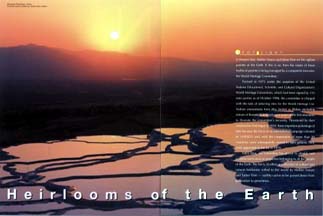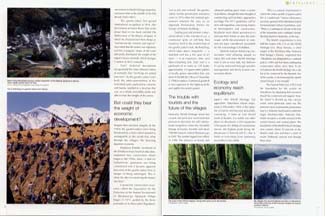Heirlooms of the Earth




Introductory Paragraphs




In Western lore, Mother Nature and Father Time are the vigilant parents of the Earth. If this is so, then the estate of these mythical elders is being managed by a competent executor: the World Heritage Committee.
Formed in 1972 under the auspices of the United Nations Educational, Scientific and Cultural Organization's World Heritage Convention, which had been signed by 155 state parties as of October 1998, the committee is charged with the task of selecting sites for the World Heritage list. Nubian monuments from Abu Simbel to the Hilae, including statues of Ramses II, in Egypt were among the first structures to illustrate the convention's necessity. Threatened by dam construction that began in 1959, these important archeological sites became the focus of an international campaign initiated by UNESCO and, with the cooperation of more than 20 countries, were consequently moved to safer ground. They were appointed to the list in 1979.
Since then, the committee has striven to identify and preserve such areas as properties belonging to all the people of the Earth. The list is, in effect, a collection of cultural and natural heirlooms willed to the world by Mother Nature and Father Time -- earthly curios to be passed down from generation to generation.
CONTINUE TO MAGAZINE II |
MAGAZINE I HOME |
HOME |